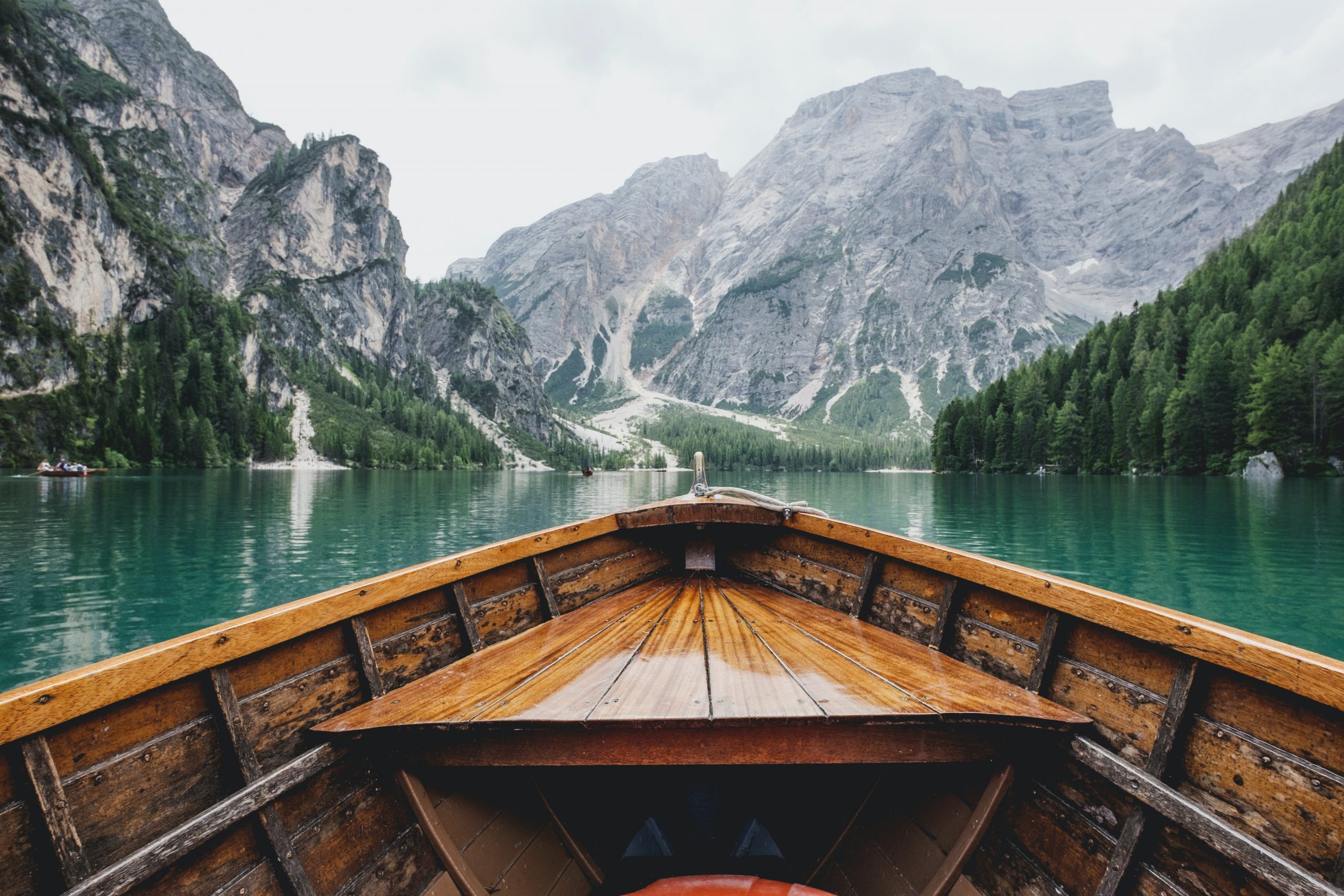In this guide, we continue with our offshore sailing routes for a three year blue water cruise around the world. In the previous article, we departed from the East Coast of the United States, sailed to Panama via the Bahamas and the Caribbean, and transited the canal to the Pacific Ocean. From there, we covered the Galapagos Islands, French Polynesia, the Cook Islands, Tonga and Fiji before finishing our first year’s cruise in New Zealand.
Next, we will complete our circumnavigation by sailing over the top of Australia, across the Indian Ocean, around South Africa and back to our starting point in the Caribbean. Keep reading to learn how you can plan your own voyage – all the way around the world.
Offshore Sailing Routes Down Under – New Zealand and Australia
After a four or five month pause from your world voyage, by March or April it’s once again safe to cast off the dock lines and cross the seas again. The next leg of the circumnavigation is across the notorious Tasman Sea, from Northern New Zealand to the East Coast of Australia. The goal for this sailing season will be to make it to South Africa by November, a similar distance to the first year’s cruise from Florida to New Zealand.
Tasman Sea
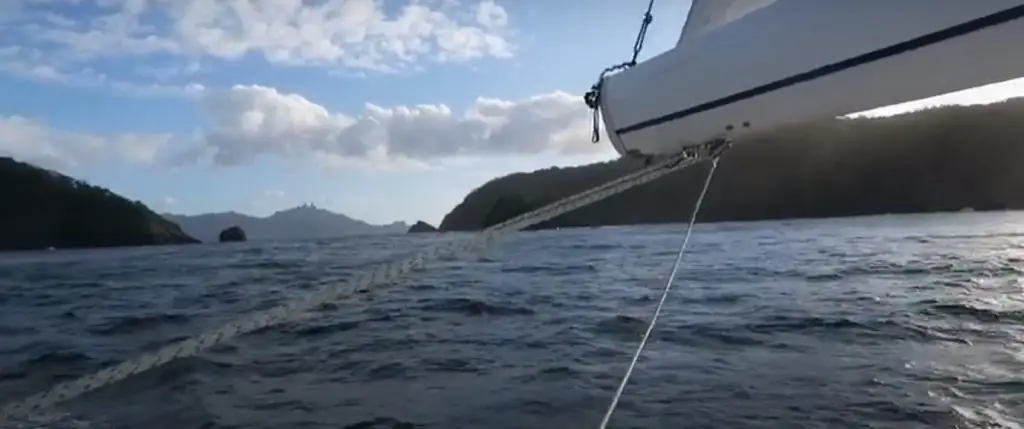
Like the passage south from Fiji, the sail across the Tasman Sea can also potentially mean encounters with challenging weather conditions. Some of the most talented professional boaters in the world have been lost in the Tasman Sea, like the blue water kayaker Andrew McAuley who disappeared at sea just one day away from landfall on the South Island of New Zealand.
McAuley was further south in the Tasman, where the conditions are much worse than our route further north, but you will still want to take all precautions to make sure this is a safe passage. As always, be patient and wait for conditions to be ideal before departing and watch the weather closely as you make your way across. Make sure all your safety equipment is up to date, and have a plan in place for what to do in case a storm hits.
Australia
With luck, you should be making landfall in Australia about ten days after departure from New Zealand. Like New Zealand, Australia has a strict policy with regards to arrival, and they take all precautions to avoid accidental importation of foreign animals, plants or disease. If you have pets onboard, it’s a better idea to avoid making landfall here and planning a route further north through the Solomon Islands and Papua New Guinea instead.
Australia is an incredible place for the world cruiser to visit. There are endless possibilities for places to explore, from Tasmania to the Kimberley Coast and many places in between. In order to keep to our three year round the world schedule, we will plan to focus on sailing the Queensland Coast, making landfall in Brisbane.
Once you have cleared into the country, it might be a fun idea to plan an overland trip to the Australian Outback. The bush makes up much of the country, and no trip to Australia is complete without a visit there. Sydney also makes for an excellent side trip, with it’s iconic harbor and world famous Opera House.
The Great Barrier Reef
After you have enjoyed a few days or weeks of inland adventure, it will be time to turn your attention to the Great Barrier Reef – the largest reef in the world. The southern entrance to the Great Barrier Reef is just a short sail north of Brisbane, and our route sails inside the reef all the way to the northern tip of Queensland at Cape York. The reef encompasses countless islands and bays and deserves at least a month or two to properly explore.
Take your time and enjoy the sailing but be careful because Australia has more dangerous animals than you can poke a stick at. Most of them don’t pose a serious risk to the prudent mariner, but you will certainly want to check for local warnings for crocodiles before swimming in a suspect location, and be aware of the dangers of the creatures like box jellyfish, one of the most poisonous animals on the planet.
After a month or two of sailing along the Great Barrier Reef to Cape York, you will finally leave the Pacific Ocean behind and enter the Arafura Sea. Make sure to study the tides and currents here, because they are notoriously strong at times. The passage around the Northern end of Australia to Darwin is short, but it can be tricky due to the many islands, reefs, and the strong current. You will also want to keep a close eye out for shipping in these restricted waters.
Offshore Sailing Routes On Towards Africa – The Indian Ocean
Your last stop in Australia is Darwin, the northernmost large city on the continent. This will be the place to stock up on supplies and prepare for your passage across the Indian Ocean. Plan to depart Darwin no later than July to give yourself plenty of time to arrive in South Africa by November.
Crossing the Indian Ocean will be similar to your voyage across the Pacific, except that you can expect the trade winds to be more boisterous, with conditions often rougher than those found in the South Pacific. Fortunately you are still in the trade wind belt, so a bad storm is rare if you keep to the proper cruising season.
Before leaving Darwin, stock up on all essential supplies because goods will be more expensive and with less selection available all the way to South Africa.
The first stop is Cocos Keeling Islands, which are owned by Australia. For cruisers with extra time who want to experience a wonderful taste of Southeast Asia, Bali is also a nice stop along the way that is only a short detour from the main route.
Mauritius Island
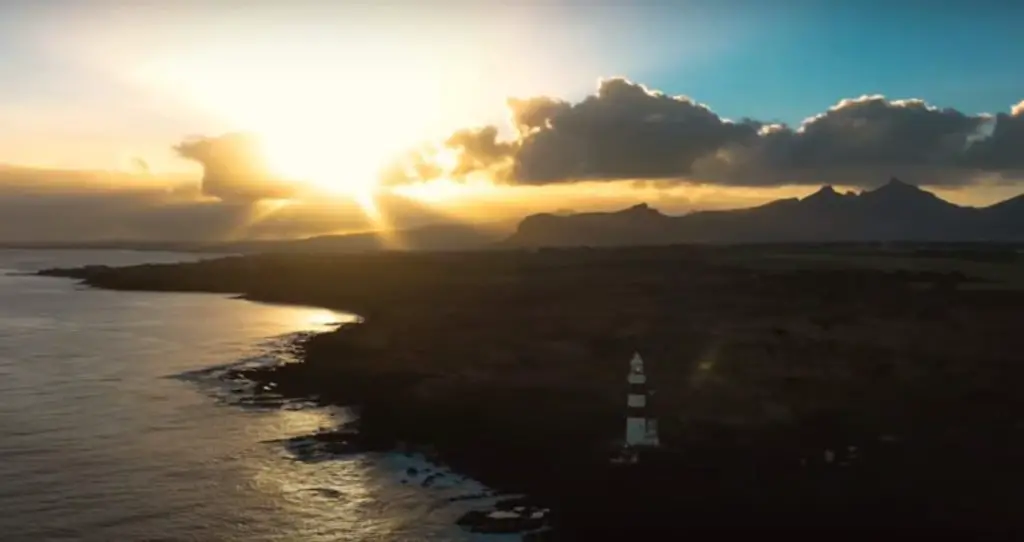
The longest passage in the Indian Ocean will be from Cocos Keeling to Mauritius Island, a two to three week journey. Like much of the Indian Ocean, the trades here can be strong, so you may find yourself making the passage under reduced sail area, but with usually solid winds you should be able to make good daily progress.
Regardless of how the passage goes, Mauritius makes for a wonderful Indian Ocean landfall. The island is lush and mountainous, and it is well known for its natural beauty. It has often been said that sick Europeans who were told they are about to die often come here and find themselves living for many more decades due to the island’s beauty and ideal climate. It’s truly an oasis in the ocean where sailors have enjoyed stopping since the early days of the pirates. Many notorious buccaneers used the island as a hideaway, and while searching for an easy source of food, they drove the helpless dodo bird to extinction.
Reunion Island
The next port of call is only a one day sail to the west. It’s the island of Reunion, Mauritius’s twin island, which is still part of the French colonial empire. If you have been missing fresh baguettes and french wine ever since Tahiti, then Reunion is an essential stop along the world cruise! It’s also said to be just as beautiful as Mauritius, and offers all the benefits of being part of the EU, like direct flights to Europe for visiting friends or quickly shipping in spare parts.
Madagascar
The final leg of the Indian Ocean crossing passes around the southern end of Madagascar to Durban, South Africa. Madagascar makes for a fascinating boating destination of its own, but the ideal ports are all to be found on the north side of the island, so we will leave it for the next world cruise. The Mozambique Channel between Madagascar and continental Africa can often have nasty weather, and it will be important to plan this leg for October – before the start of the Cyclone season, but well into the austral spring. Many boats take a beating on this leg, so be prepared for some potential rough weather.
Once you make it past Madagascar you are in the final stretch of the passage and only a few days away from the Southern Cape of Africa, the final great challenge of the circumnavigation.
Offshore Sailing Routes Around the Bottom of Africa -The Cape of Good Hope
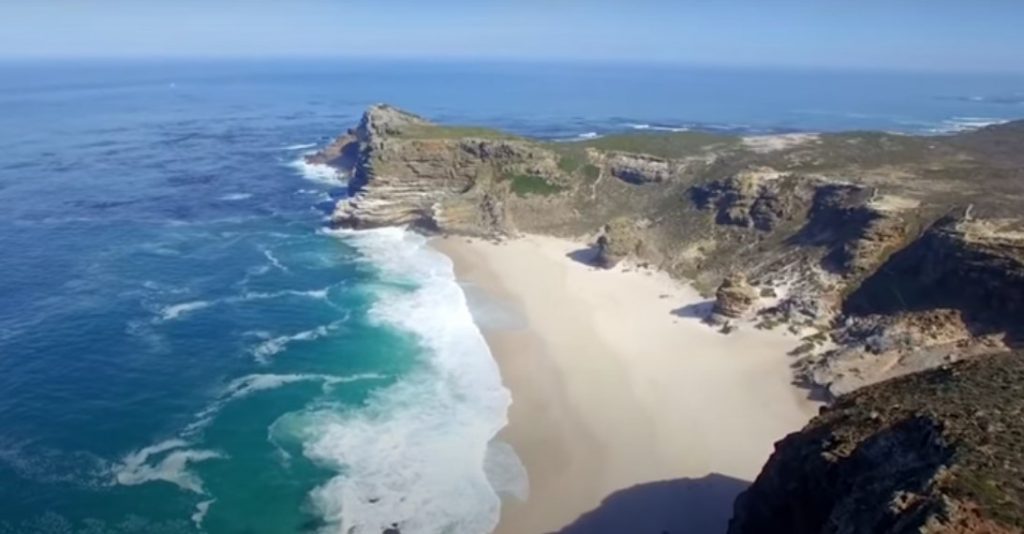
Arriving in Durban, South Africa in October or November will mark the end of two years of voyaging around the world. Durban has safe, affordable moorage available, and this is a great location to again leave the boat and fly home to work or visit family. Alternatively, you can find overland transportation and travel inland – after all, what can beat an African Safari for adventure?
A few months off the boat – either visiting home or traveling on safari in Africa – should recharge your batteries sufficiently to take on the next leg of the voyage around the bottom of South Africa. This part of the journey consists of numerous two or three day passages between safe ports. You will likely end up spending more time in port than at sea due to the nature of the weather along this stretch of coastline.
South Africa is where the warm coastal Agulhas Current collides with cold low pressure storms from the Southern Ocean. When this happens, the seas can be immense, and extremely dangerous. In order to avoid the worst of the weather, you will want to wait for the west wind to die down, then use the strong current to help you get to the next port before another storm blows through from the Southern Ocean. With a lot of patience and a little luck, you should be able to make it to Cape Town without encountering a serious storm.
Cape Town
Just prior to arriving in Cape Town, the largest city on the west side of South Africa, you will round the Cape of Good Hope and officially enter the Atlantic Ocean. Now you just have one last ocean to cross and it’s downhill all the way home!
Offshore Sailing Routes Closing the Circle – The Atlantic Ocean
Cape Town is often called the most beautiful city in Africa, and for good reason. There is no better place for you to rest after your rounding of the Cape of Good Hope (The only one of the Five Great Capes that you will need to pass on this route around the world).
After the challenges of the South African coastline, and the reinforced trade wind conditions of the Indian Ocean, you will likely be happy to know that the passage across the South Atlantic Ocean is known to be one of the easiest in the world. The trade winds tend to blow steadily behind you, and most boaters enjoy a kind of Atlantic version of the “coconut milk run” that they remember from crossing the South Pacific.
Saint Helena
The conditions should be nice, but it’s still a long way across the Atlantic, and there is only one stop at the tiny and remote island of Saint Helena, about ten days out of Cape Town. As with all the long ocean passages along this route, you will want to prepare accordingly.
I always make sure to bring enough food and water for twice the time I expect to be at sea, and also keep an emergency supply of rations that could keep the crew alive for two months or longer in case of dismasting (losing your mast and rig) or some other emergency. At sea, thousands of miles from the nearest port, you are on your own if something happens.
There are no hurricanes in the South Atlantic Ocean, so you can make the passage across at any time of year. Hurricanes do affect the Carribean from May to November, however, so you will want to keep your landfall on the other side of the Atlantic in mind when planning your crossing.
Saint Helena, the first and only stop available to cruisers before Brazil at the other side of the Atlantic, was once home in exile to Napoleon after his capture by the British. They kept him here to make sure any escape attempts were unsuccessful, after all it is one of the most remote inhabited islands in the world. Most visitors make the pilgrimage to the house where he died, atop a mountain in the center of the island.
You can buy food and supplies at Saint Helena, but everything is expensive since it has to come in on the twice monthly cargo ship that visits here. The locals, however, are said to be some of the friendliest people to be found anywhere, and love to welcome visitors to their remote island home.
Natal
From Saint Helena it’s another two week sail to the northeast corner of Brazil, where Natal makes for a convenient stopping point. Brazil is an enormous country that deserves many months of cruising to really experience properly, but much of the best boating areas are off our route, so we will focus on the northern coast of the country. Our arrival here also marks an important point in our circumnavigation – we have now crossed the last open stretch of ocean for the voyage, and now have only coastal sailing all the way back to the USA.
Belem
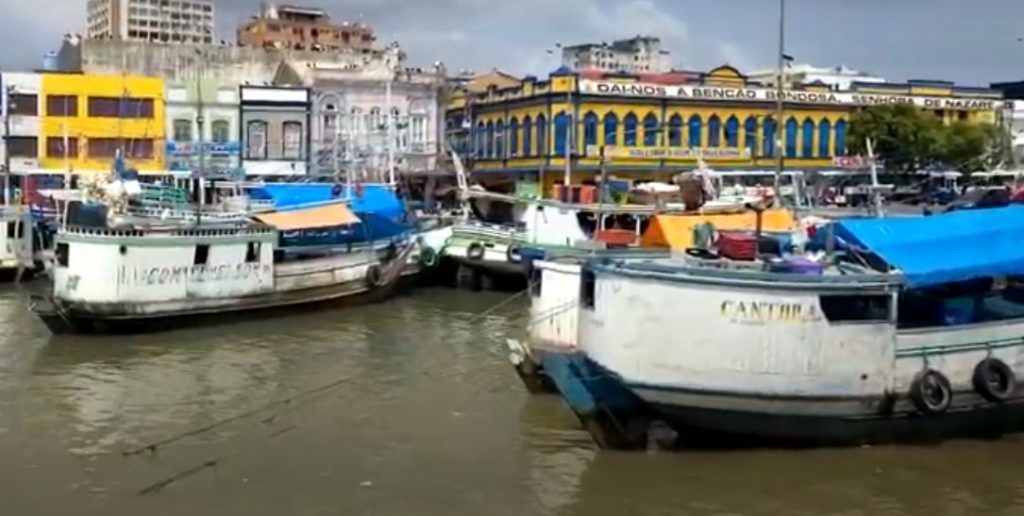
From Natal, sail along the coast of Brazil to our next stop, Belem, at the mouth of the Amazon River. The Amazon is the largest river in the world and it’s drainage area is as large as the United States. It’s home to most of the remaining virgin rainforest on the planet – although that is rapidly shrinking by the day – and it’s also the last place on the planet with remote tribes of indigenous people who have yet to make contact with the outside world. Adventurous sailors may plan a detour part way up the river, or you can leave the boat in Belem and take one of the many passenger ferries upstream to Manaus, or beyond.
Caribbean
From Belem we will sail directly to the Caribbean, getting a significant boost from the fresh water pouring out of the Amazon for the first few hundred nautical miles. The dual island country of Trinidad and Tobago makes for an excellent landing point and return to the Caribbean Sea, where this long journey began almost 25,000 nautical miles and three years before.
If you arrive while hurricane season is still in full swing, it’s a good idea to wait out the rest of the season in Trinidad and Tobago which is safely outside of the path of storms. If you want to keep the voyage under three years, then in November you can make a straight shot for Florida as soon as it’s safe. The direct passage should take under two weeks. For those looking for a more leisurely end to the world voyage, you can island hop up the Caribbean chain, taking time to sample the many delightful islands along the way.
Completed Voyage Around the World
Soon you will be closing the circle right back where you started before gaining all those miles under your keel. Congratulations – you have now sailed 360 degrees around the world and have officially become a circumnavigator! The voyage may take only three years – but the memories will last a lifetime.
Sailing around the world in your own boat is no small feat, but with some determination it’s very much achievable for the everyday sailor. Of course, this article is just a guideline, it’s up to you to plot your own course across the seas – and around the world.
As you prepare for your own boating adventures like a sailing voyage around the world, there is no better place to find the information that you need. We will be publishing updates regularly, so sign up to our newsletter today to get the latest info right in your inbox.

